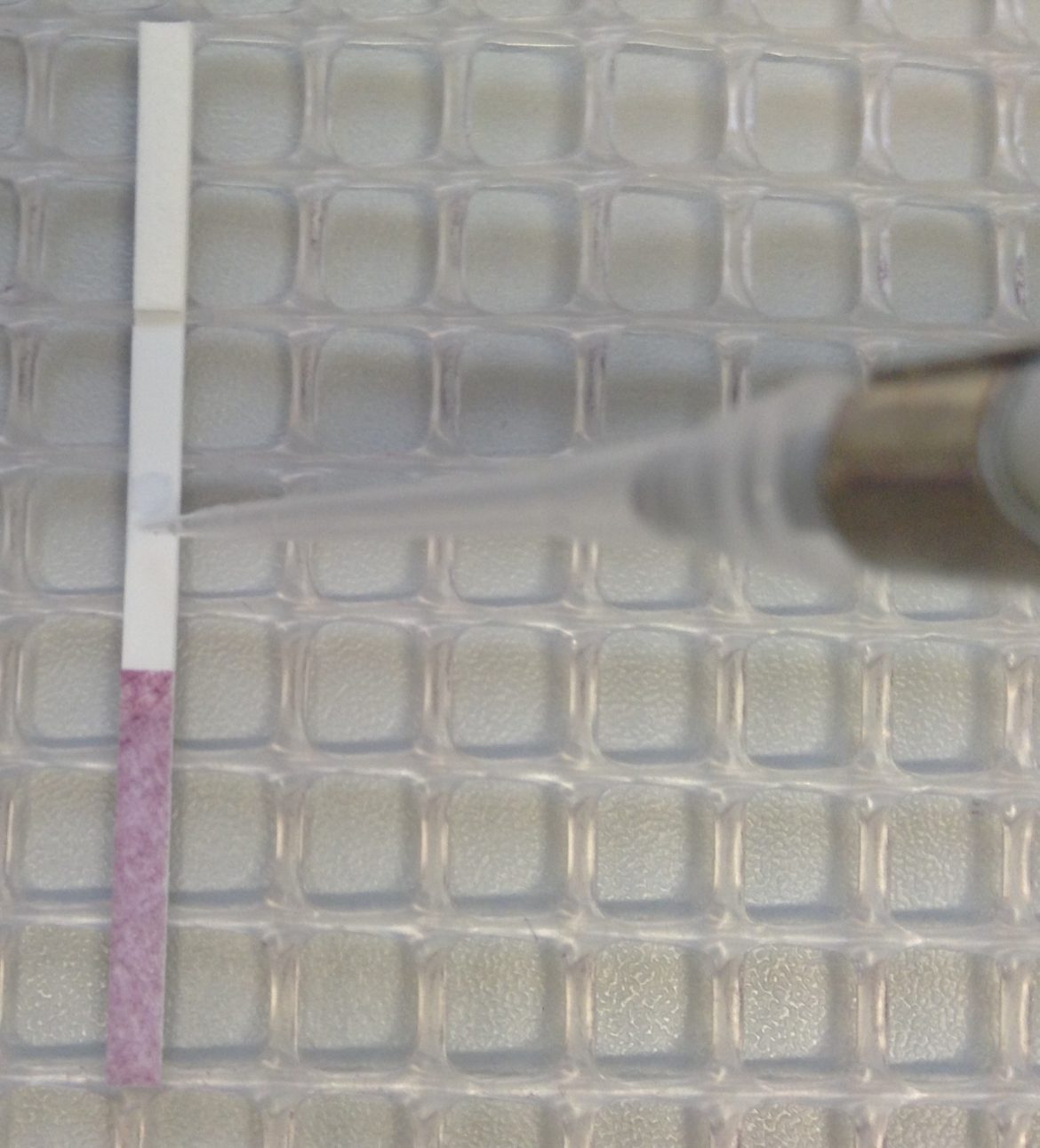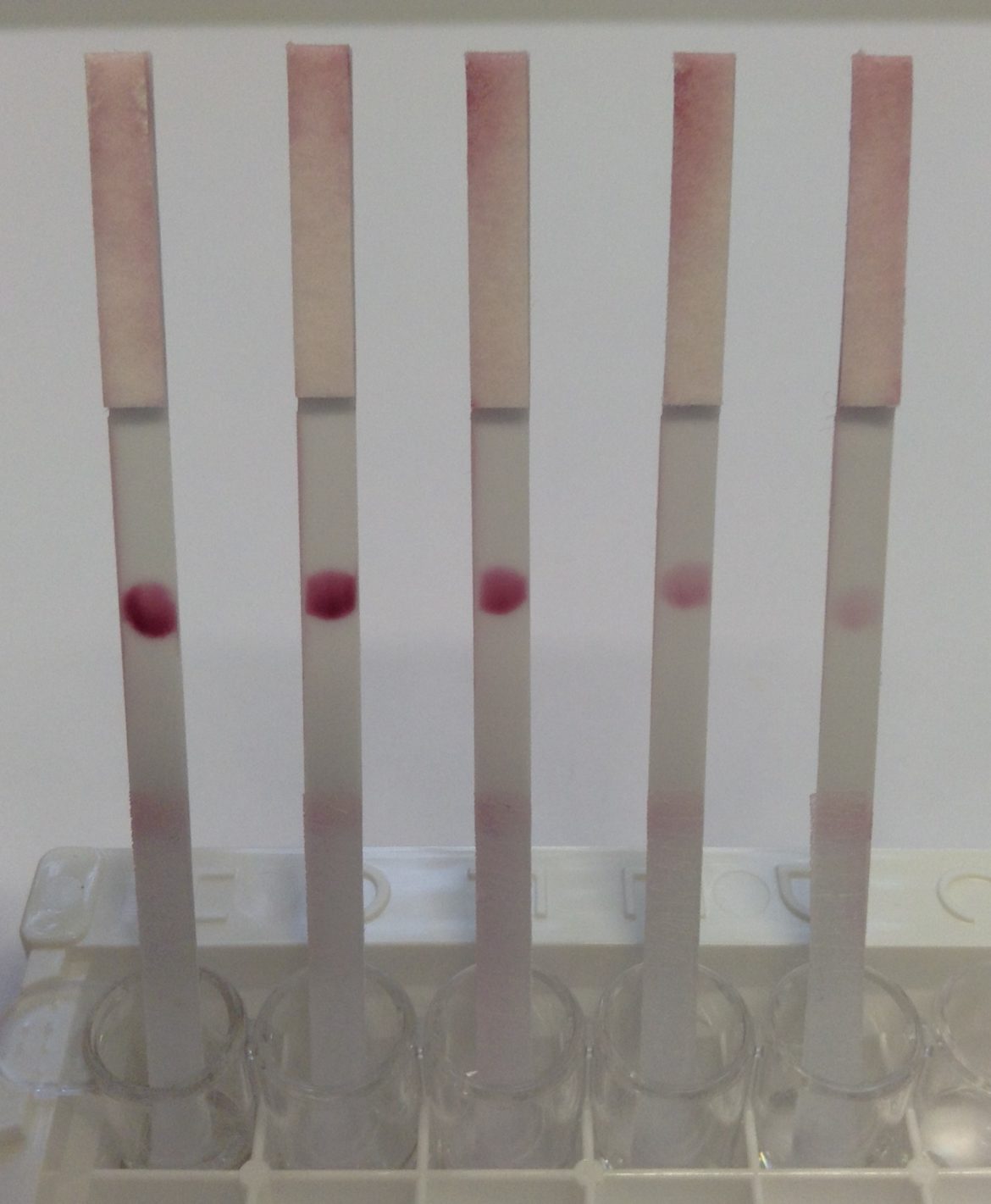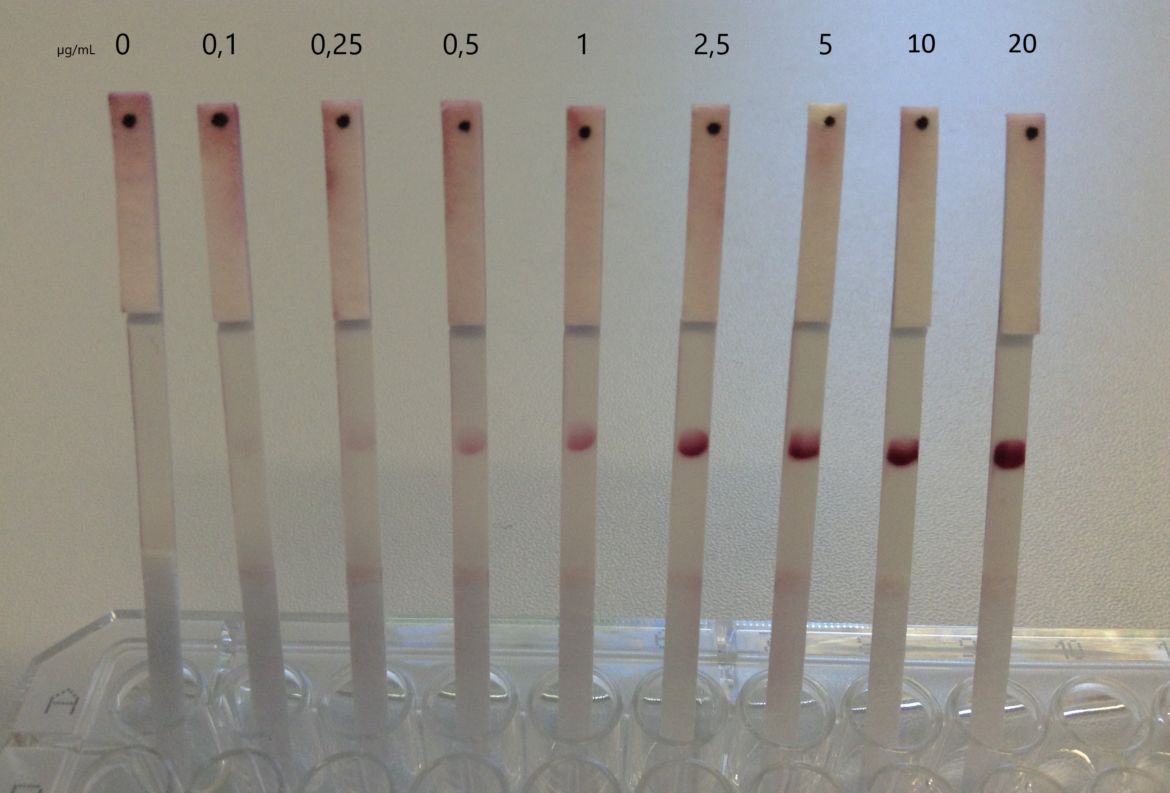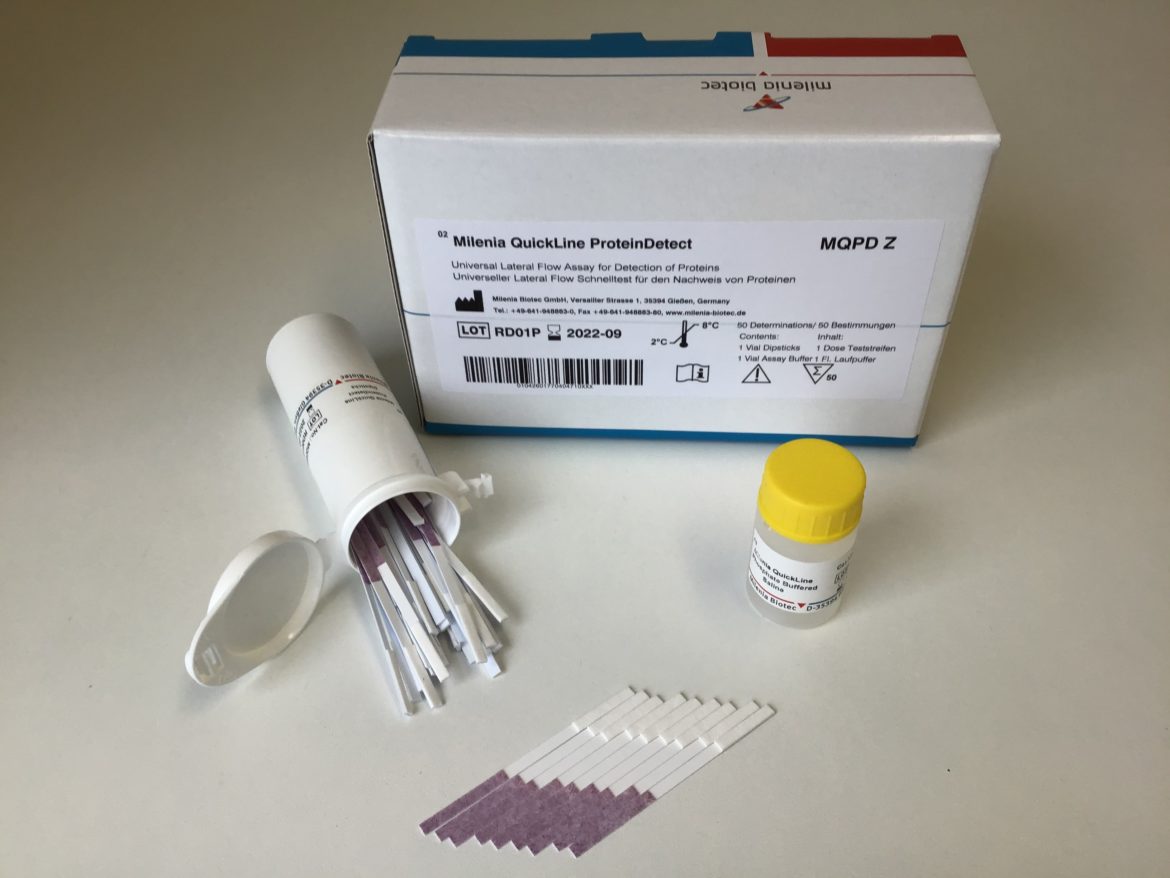
Why is a rapid Protein/Antigen and Antibody Detection Test necessary?
With Milenia ProteinDetect you can identify your protein of interest within a very short time and little equipment. When trying to overexpress a recombinant protein in cell culture (e.g. E.coli, S. cerevisiae,..) ProteinDetect allows you to screen for your protein of interest in a few minutes. The only thing you need, is a specific mouse antibody. If you express a tagged protein, you can even use a mouse antibody against the specific tag. A big advantage of ProteinDetect is, that you can check the presence of your specific protein during the expression without the need of protein purification or time consuming dotblot or westernblot.
A second possible application for Milenia ProteinDetect is developed to help researchers trying to find the best mouse antibody during antibody production. For this purpose you only need to coat the antigen your desired antibody is specific for on the ProteinDetect dipsticks. You can use a few microliters of cell culture supernatant (e.g. from hybridoma cells) directly during antibody production to check if your desired antibody is present. The preparation of the dipsticks can be done in advance and stored for several month.
What is the Rapid Antigen and Antibody Detection Test ProteinDetect?
We designed a rapid lateral flow test based on a universal dipstick. The conjugate pad of the dipstick contains gold nanoparticles dried in the pad. The nano-particles are coated with anti-mouse IgG antibodies for the visualization of your results. In the middle of the dipstick, your antigen of interest has to be placed. If an antigen-specific mouse antibody is present in your sample, this antibody binds to the antigen on the dipstick and becomes visible after binding of the gold nanoparticles.

Two main applications for ProteinDetect
1. Protein/Antigen Detection
If you have a specific antibody (mouse), ProteinDetect allows you to check if your protein of interest/antigen is present in a random sample. Just transfer some µL of the sample you want to analyse on the membrane of the ProteinDetect dipstick and let it dry for one hour. Afterwords you can put the dipstick in a well of a microtiter plate, where you prepared a solution containing your antigen-specific antibody. You can detect native or recombinant proteins and protein-tags by combining the antigen-specific antibody with functionalized goldnanoparticles (anti-mouse IgG).

2. Verify that your Antibody is specific
ProteinDetect can be used for the detection of specific antibodies. The only thing you need for this application is your antigen. The dipstick is universal for proteins, peptides or haptens coupled to a carrier protein. After pipetting the antigen on the dipstick (See Chapter “Set up your Assay”) you can test you antibody’s specificity. Your test solution has to be transfered into a microtiter plate and the dipstick have to be placed into the well. If an antigen-specific mouse antibody is present in your sample, this antibody binds to the antigen coated to the membrane within some minutes. The “coating” of the antigen can be done by yourself by dotting or, if high amounts of teststrips are needed, lined by Milenia. Specific binding of the anti-mouse antibody-gold nanoparticles to the antigen-anti-antigen-antibody-complex leads to the formation of a visible signal on the teststrip (purple dot or line).

How does the rapid Antigen/Antibody Detection Test work?
Prepare your individual rapid test – Dipstick preparation
The first step is the coating of your individual antigen on the membrane of the ProteinDetect dipstick. If you have just a few samples, it is easy to do it on your own. For a larger quantity of dipsticks, you can contact Milenia and we will do the coating for you with our coating equipment.

- For preparation of the test, pipette a small volume (0.3 – 0.5 µL) of antigen solution in the middle of the membrane of the dipstick.
- Depending on the antigen, it is of advantage to dry the coated dipstick for one hour at 37°C
- The coated dipstick should be stored at 4°C and can be used for several months.
Performing the Lateral Flow Assay
The result of your Lateral Flow Assay can be read without any equipment, just by eye.

- Pipette 10 µL test solution into a well of a 96-well microtiter plate
- Add 50 µL PBS (included in the Kit) and resuspend
- Insert the dipstick with the red end into the mixture
- incubate for 5-15 minutes
- read your result
Advantages of ProteinDetect compared with Dotblot
- no blocking needed
- no 2nd antibody required
- no substrate for detection
- no instruments
- short in time
Additional Application – Visualization of specific Binding at different Antibody Concentrations
With ProteinDetect it is also possible to detect a specific binding at different Antibody concentrations. For this you have to coat your Antigen at a constant concentration onto several dipsticks (depending on the Antibody concentrations you intend to test). Then you can use your antibody in different dilutions to check the binding capacity of the antibody.
Note that the specific signal depends on the nature and concentration of the antigen, as well as the specificity and affinity of the antibodies and other parameters. Thus, the test procedure should be adapted individually on your special conditions.

Characterization of Antibody Specificity
To characterize the specificity of an antibody you may use several similar or comparable antigens, which may be present in your planned assay (e.g. proteins within a serum sample, tags, dyes or other relevant molecules). Therefore, you only have to dot the antigens on the membrane of the Milenia ProteinDetect test strip and use the identical procedure compared to the detection of the original antigen. This allows a rapid screening for undesired cross reactivity and thus the selection of the most specific antibody for your individual assay.
Milenia ProteinDetect – Kit components
The Milenia ProteinDetect contails 50 universal dipsticks with gold-anti-mouse-IgG conjugate and 10 mL PBS.

If you like to get a free ProteinDetect sample kit, please click here!
This product is for research use only!
